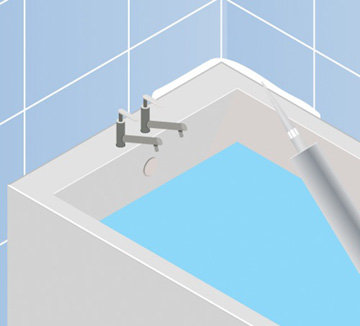DIY Home Repairs During a Pandemic

At a time when most of us are concerned about inviting strangers into our homes, handling unexpected repairs can be a challenge. After all, that burst pipe doesn’t really care if you want to call a plumber or not. However, there are several home repairs you can complete yourself with the right knowledge and tools, making it unnecessary to call in the pros. Here are some tips for tackling DIY home repairs during a pandemic.
Repair drywall
Did that picture-hanging process leave you with a big hole in your wall? Fortunately, repairing holes in your drywall is an easy fix with a little spackle. Scrape off any loose bits with a taping knife and then spread on some spackle. If the hole is too large for this kind of spot fix then use a mesh patch. This will give you a smooth surface on which you can apply the spackle. Let dry for 24 hours and then sand off any rough edges. It’s always handy to keep leftover paint so that you can touch-up small fixes like this as well.
Fix a running toilet
Do you have a problem with a toilet that just won’t stop running? Not only can that noise become irritating, but it can also run up your water bill. The good news is that this is another repair that you can easily tackle by yourself. If your toilet won’t stop running, then it’s probably a faulty flapper. This is the small rubber piece that separates the tank from the toilet bowl. Start by turning off the water behind the toilet. Remove the tank lid and flush to empty out the tank. Remove the old flapper and replace it with a new one. Attach the chain to the trip lever and make sure the flapper can fully close. Turn the water back on and try a test flush. If the toilet is quiet after the tank fills, then you did it!
Replace caulk
While you’re working on your toilet you may realize that the caulk in your bathtub has seen better days. If your caulk is cracked, broken, or peeling, then it could cause water damage and mold. But have no fear, replacing caulk is a job that you can DIY as well. First, completely remove all the old caulk with a putty knife or razor blade. Then fill the tub with water. The water weighs down the tub and expands the gaps so you’re sure to get good coverage. Now thoroughly clean the surface by vacuuming up debris and then wiping with a paper towel soaked in rubbing alcohol. Then apply the new caulk. It’s a good idea to invest in a high-quality caulk, as it will last much longer than the cheaper versions. Finally, dip your finger in water and run it along the caulk line. This will smooth the caulk and force it into the gap. Patch any holes with new caulk and smooth using the same process. Follow the directions on the caulk container for drying time – usually it’s about 24 hours.
Compliments of Virtual Results





What Others Are Saying